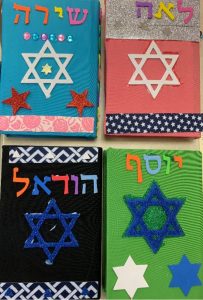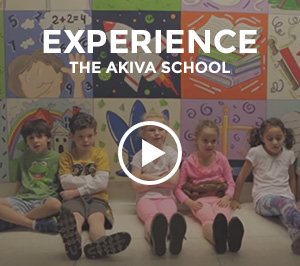
Rabbi Grossman, Head of School
Chidushim B’Chinuch—Insights into Education
Tenth of an Ongoing Series
Watching Akiva students participate in prayer services, one would never know that prayer, or tefillah, in Hebrew, is considered the greatest educational challenge in the Jewish day school world. Among Jewish educational professionals, tefillah is described as an intractable war in which teachers are constantly engaged in battle with combative students. The students, for their part, see worship—and the teachers and administrators who oversee it—as an enemy to be conquered. Blessedly, this reality is completely foreign to the Akiva School, wherein children look forward to the prayers and their accompanying rituals. At Akiva, tefillah is often the most joyful part of the day for our students. Why is the reality so different at our school?

Dr. Sauls Wachs
Most of the answers to this question can be found in the scholarly work of Dr. Saul Wachs. Dr. Wachs recently retired as Professor of Education and Liturgy at Gratz College, an institute of Jewish studies in Pennsylvania. During his 42 years as the preeminent researcher of prayer in Jewish day schools, Professor Wachs discovered that there is radical change in students’ attitudes towards prayer that takes place when they enter their teen years. Wachs observed that elementary school students generally like prayer, but these very same students grow hostile to tefillah as they become teenagers. Wach’s hypothesis, which is now the reigning theory, is that elementary school children enjoy prayer not because they have a relationship with God or the siddur (prayer book), but because they enjoy singing. As children mature, however, their love of singing wanes; their voices change, they become more self-conscious, and all but a few lose interest. Elementary school teachers, Wachs continues, mistake children’s proclivity for song as a passion for prayer, and therefore do not invest in making prayer a meaningful experience; Wachs calls this misreading of students during tefillah “The Trap.”
Assuming that Wachs is correct, the primary reason that Akiva students have such a wonderful attitude towards tefillah is because they are elementary school students, and take pleasure in the melodies of the siddur the way they like to sing other children’s songs. There are, however, other factors that explain Akiva students’ positive relationship to tefillah. Wachs suggests that the way to remedy the natural decline in children’s interest in tefillah is to engage students in in-depth study of prayers while students are still young enough that they enjoy reciting them. Wachs warns us not to fall into The Trap of thinking that students are relating to the prayers just because they are singing them; we must discuss the prayers with our students and engage them in discovering how the words of the tefillot give significance to their lives. In this way, even after students stop enjoying the tunes of the tefillot, they will continue to find meaning in their message. At Akiva, we dedicate time in our Jewish studies curriculum to exploring the sense of the siddur. Even our youngest students learn what the prayers mean—not merely the translation of the words, but the philosophies and theologies that inform them.
As an example, Adon Olam is one of the most popular Jewish prayers owing, in great measure, to the fact that it can be sung to a myriad of different melodies, some of which completely obscure the profound message of its poetry (I recall, in the days of my youth, singing Adon Olam to Yankee Doodle). This year, our students learned how Adon Olam begins by describing God as the Master of the Universe, the Lord Who has ruled the world since creation, then goes on to speak of the Almighty in the most intimate terms, as “my God,” and “the God in Whose hands I entrust my soul.” Our students were challenged to ask themselves what it means for the greatest power in the universe to care about them personally. Through discussions like these, our students build a deep and individual relationship with the words of the siddur that will last them throughout their lives.

Grade 1 Siddur Covers
Through our Kabbalat Siddur ceremony and our siddur cover decorating in Grade One, our students are imbued with a love of prayer by building a relationship with the siddur itself. By creating a relationship between our students and the physical siddur book, Akiva students feel a connection to the prayers because of the bond they have with the bound pages of the prayer book.
Wachs also argued that the physical space in which tefillah is conducted has a great impact on the feeling students have towards worship, an argument that I confirmed with my own research into Jewish day school prayer that I conducted through the University of Michigan 20 years ago. While for practical reasons tefillah takes place mostly in the classroom, this is a most uninspiring place in which to encounter the Divine.

Kabbalat Shabbat Service
Tomorrow is our schoolwide Kabbalat Shabbat service. Once a month, our students gather together to experience tefillah in the sanctuary of the Shaar, responding to Wachs’s argument that students need to experience prayer in an inspiriting setting. Tomorrow is the first time we are opening this experience to our parents and grandparents to see all of our efforts in tefillah on display. The service will include rapturous singing and meaningful explanations; those who attend will need no explanation as to why prayer at Akiva is an unparalleled experience.



